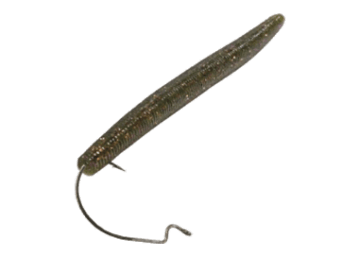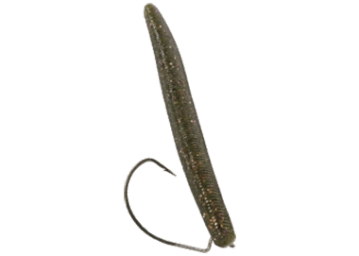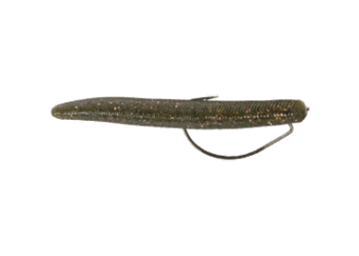The Texas rig is a simple LRF rig used to fish a soft plastic lure sink and draw adjacent to the seabed or underwater obstructions.
Texas Rig Components
1 x worm style hook, this can be a straight or offset hook
1 x bead, glass or metal
1 x bullet weight or drilled bullet, lead or brass
The Rig Body
1. Thread weight and the optional bead onto the leader from the main line.
2. Tie the hook directly onto the leader line.
The idea of the glass or metal bead is to produce a rattle when the lure is worked.
The plastic bait can be rigged in several ways but one of the most common is using an offset hook to provide a weedless or semi-weedless rig.

Thread the worm between 5 and 12mm onto the hook and bring the point out through the worm.

Thread the worm up the hook to sit on the offset, moistening the hook can help the worm slide easily on the shank.

Pinch the worm then thread the point back through the worm to come out the opposite side.

The point of the hook can be nicked just below the outer skin of the worm to complete the weedless effect.
The idea behind the Texas rig is to fish it sink and draw style. When the rod tip is dropped the weight falls ahead of the lure, sliding on the line. The lure flutters slowly behind and the weight is allowed to rest for a few seconds so that the lure continues to fall to the sea bed. Fish will regularly hit the lure on the drop.
As the rod tip is raised the line flows through the weight pulling the lure behind it until it meets up with the sinker again. Using a brass or other hard metal weight together with a glass or metal bead will add an audible knock which can attract fish to the lure.

Click on image for larger version

